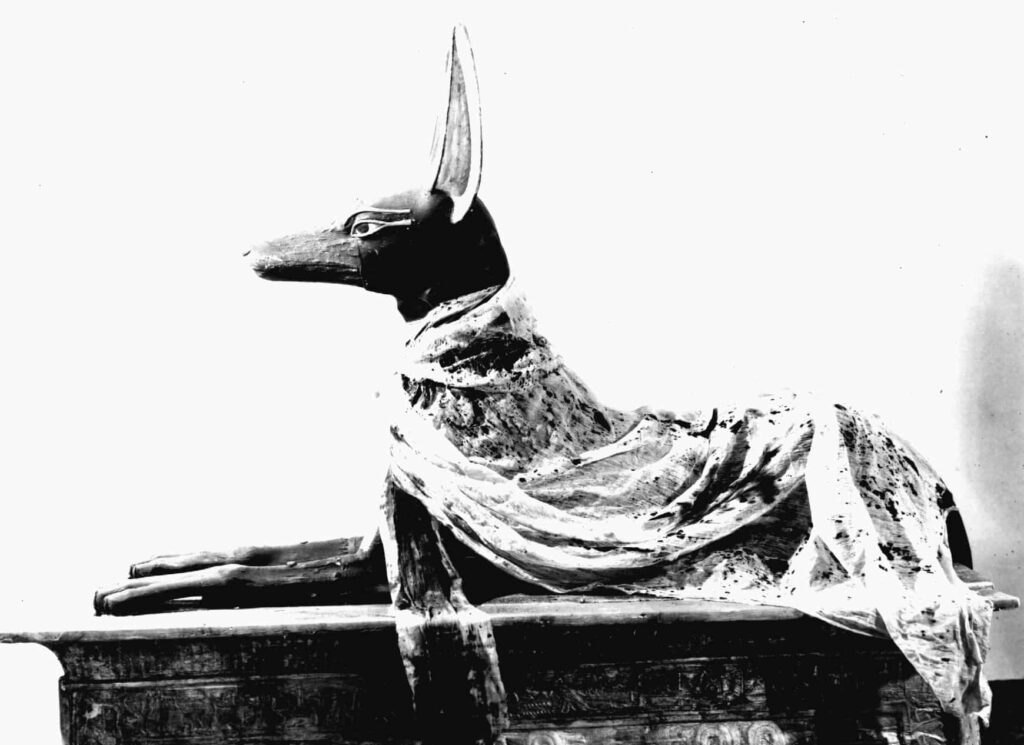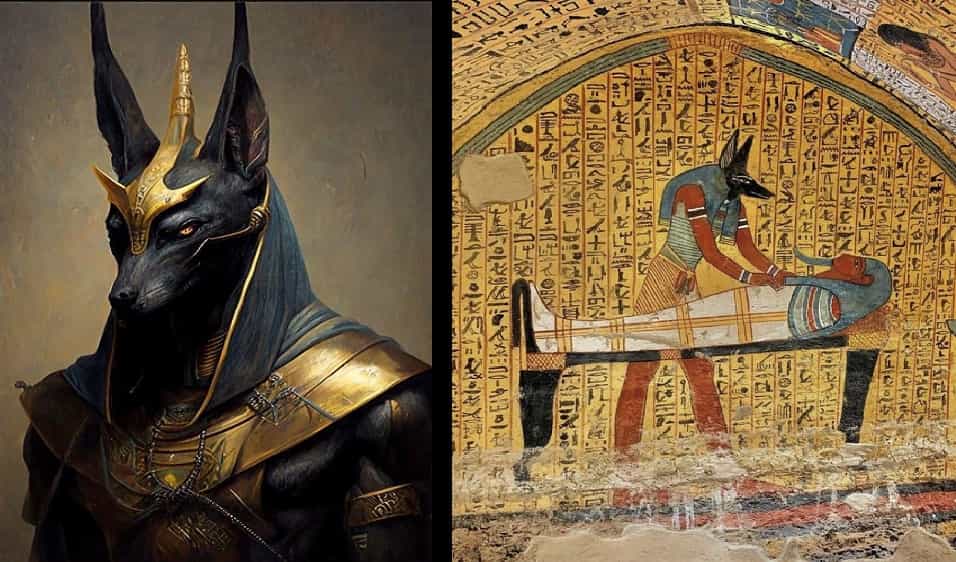Anubis was one of the principal and oldest ancient Egyptian deities. Known as Sed, Upuaut, Inpu, or Anpu in ancient Egyptian, although the most recognized name today, Anubis, is of Greek origin rather than Egyptian. The cult of Anubis persisted throughout Egypt’s history from the predynastic era to the Ptolemaic and Roman periods.
During the predynastic era, he was called Khentiamentiu, “the opener of the ways,” the one who precedes, removing obstacles and preparing paths into the unknown for others to follow. In times of difficulty and change, he led the way, protecting others.
In Egyptian mythology, he is depicted as the son of Nephthys and Osiris, or alternatively as the son of Ra and Nephthys. He is sometimes considered the brother of Osiris.
The feminine form of Anubis is Anupet or Anput, his wife. Their daughter, Qebehut (meaning “fresh water”), became the funerary goddess associated with purification through water.
Anubis is often portrayed as a jackal or as a man with a jackal’s head, his ears always upright as a symbol of perpetual attentiveness. He is also depicted on a standard, as seen on Narmer’s palette from the First Dynasty. Another common representation shows him lying atop a chest, guarding the papyrus of the Book of the Dead stored within.
As a psychopompic deity, he ruled over the souls of the deceased who had passed on and those of the Initiates who had transcended the human stage.
He guided the souls of the deceased on their journey to the afterlife, navigating the desert (symbolizing death) and unknown lands in darkness, leveraging his jackal form’s ability. He created paths through the unknown and guided souls toward the Light.
Because of this role, he was known as “the Lord of the Western Mountain” (of the dead), where the Sun set (and the day ended). His domain was the Night, both physical and psychological, whether for individuals or the world, encompassing nocturnal sleep for brief rest periods, death (the interim between lives), or intervals between major cosmic cycles. He was associated with the sign of the scorpion, the planet Venus, and the star Sirius.
His typical attributes include the Was scepter, a staff topped with a jackal’s head and upright ears, along with two small feet at its base symbolizing authority and the ability to traverse darkness. He is also often depicted holding an Ankh cross, a symbol of eternal life.
Anubis is credited, among other things, with the invention of mummification, as depicted in the Myth of Osiris. Additionally, he presided over the weighing of the deceased’s heart (as described in the Papyrus of Ani) during the trial before Osiris. Anubis also played a role in the resurrection of Osiris, alongside Thoth, Nephthys, and Isis.









